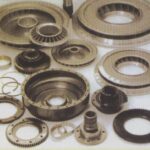Does Car Color Affect Price? (+Most Expensive Colors)
Car colors for buyers are simply a choice of personal preference. You go for the shade you feel most comfortable with. But while colors like white, silver, blue, or black are easily available, some shades need you to shed extra dollars. Why is that?
Does car color affect the price? By how much? And, What are the most expensive car colors? Let’s find out!
Does Car Color Affect Price?
Yes, the color of the car does affect its price. It also affects its cost of ownership and its resale value.
Car colors usually don’t hold much significance for us. If we like it, we buy it. With most family cars, you also don’t have many options as well. Colors like white, silver, black, gray are the most common colors offered by almost all manufacturers.
But when you go for specific colors like yellow, red, green, beige, orange, you have to pay an extra premium for that. For average cars, it could be an extra $200-$500 and $1000-$2000 for luxury ones. Still, these are colors that are offered on a wide scale.
You move up to brands like Bentley, Rolls-Royce, Infinity, Genesis, and colors are more costly than the average American salary. Go higher among Supercars or Hypercars and the average annual income won’t be enough to pay for the car paint.
Now, Why is that? What affects a car’s color price so much?
Also read: Are Black Cars Hard to Keep Clean? (No, if You do This!)
Why are Some Car Colors More Expensive than Others?
The price of a car color is very much affected by its overall development cost and its implementation.
Modern car paints are expected to last over years. These paints not only have to last long, but they also have to survive against the weather, dust, debris, corrosion, and a lot more.
The paint developed by manufacturers is not only made using pigments, it also has binders for hardening, solvents, additives with some paints containing metallic flakes for better shine. The paints are then tested over a long period over multiple conditions and only when they turn out perfect are they ready to mass-produce.
This means that manufacturers put a lot of resources into developing paints. So, they rather put the resource in the more common lovable, and trendy colors like silver, white, grey than more impulsive red, green, or purple.
Since these colors are common and are sold in large quantities, manufacturers can make a profit without charging more. But with less common colors making enough sales to pay for the development cost is rather hard, hence you have to pay a premium for it.
The higher class of cars you buy, the rarer they get, and so do their colors. With extreme luxury brands like Bentley, Rolls-Royce, customized colors are made just for your car, so they get extremely expensive.
How Expensive can Car Colors Get? What are the Most Expensive Colors?
The cost of a car color for an average car can range from $250-$1000. Same for high-end luxury cars can be $1000-$10,000. And between $10,000-$1,000,000 for custom colors offered by brands like Mclaren, Aston Martin, Koenigsegg, Bugatti, etc.
The cost of a car paint job honestly depends on how much you are willing to spend. A unique or special color for normal brands like Honda, Toyota, Ford usually ranges between $250-$1000.
Trending Video: How to Easily Bring Back to Life any Old Car Battery and Save Tons of Money (click to watch)
If you go with slightly premium brands like BMW, Mercedes, Audi, Alfa Romeo, etc., ranges between $1000-$10,000. An example would be BMW’s pure Metal Silver paint coat for $10,000.
Move up to brands like Bentley, Aston Martin, Rolls-Royce, and it can range between $10,000-$100,000. A single-tone black paint Rolls Royce costs a mere $11000. You can also get diamond dust infused in your paint if you can afford it.
And when you cross the million-dollar price point for cars, a $50,000-$100,000 paint job starts to make sense. Like the Koenigsegg Candy Apple Red paint option for $63000 or Porsche Chromaflair for $86,000 with the paint costing $2000/gallon.
Also read: Are Car Stickers Tacky? What Do Drivers Say?
Which Car Colors Hold Their Value Best?
It is seen that common, trendy colors like silver, white, black are ones to hold the least of their value.
One of the studies done by iSeeCars between 2017-2020, compared selling prices of over six-million cars and created a list of different car colors and their depreciation rates. According to this, the least common colors can have higher depreciation than common colors.
Meaning when resold, the least common colors like red, yellow, orange were able to sell for a higher price than common colors like white, gray, and silver. The yellow color surprisingly enough holds the most value with only 20.4% value lost in 3 years.
On the contrary, the color with the highest depreciation rate is gold with a 45.6% value lost in 3-years. The primary factor that affects the rates is people buying second-hand cars. Among the common colors, colors like red, yellow, or orange stand out simply because of their rarity.
A lesser number of these cars in better conditions are more appealing than plain white or silver.
Which Colors Should You Avoid?
If based on resale value, colors to avoid are grey, silver, black, white, brown, and gold. But from a safety perspective, colors like grey, silver, black, green, red, and blue.
Car colors one should avoid can be based on many factors. But a reasonable way to consider it is from a point of safety. A report published in 2007 showed that colors like black, grey, blue, silver are the most dangerous colors as they are hard to spot in low light conditions. Even vibrant colors like red, green, and blue blend into the different urban and non-urban environments.
The safest colors are white followed by yellow, orange, light, green, gold, cream, and beige.
From a point of resale, gold, grey, silver, white, brown, and black are the ones with the most depreciation. So they will get you the least resale value. Leaving colors like yellow, lime green, orange as the three best and safe color choices.
Also read: 5 Easiest to Maintain Car Colors (All You Need to Know)
Why Do Some Colors Depreciate Cars Faster than Others?
The depreciation factor of car colors is highly dependent on supply and demand. One color being commonly available just has less appeal as compared to rarer color options.
Colors depreciate with cars. The value they fetch depends a lot on their condition and uniqueness. However, that does not mean that unique colors fetch more value. Color like purple, gold, and brown are also uncommon but share higher depreciation rates.
Its color like red, blue, green, and yellow gives cars a unique shine and appeal to a lot of people. These are also colors available in fewer numbers and fewer places. Since buyers getting these colors generally have to pay extra for the premiums, they tend to maintain it better.
This generally keeps these rare shade vehicles in good conditions as well. So, compared to white, grey, silver that’s available at every dealership in higher numbers. The rarer colors are in lesser numbers at the dealership. With less availability and high demand, these colors get more valuable.
Does Color Price Affect Insurance?
For an average car, the price of insurance has nothing to do with its color.
Unless you are getting diamond dust mixed in your paint or gold panels installed, the color of your car is not a concern for insurance companies. As per, Kristofer Kirchen (Advanced Insurance Manager),” The color of your vehicle is not even a question on the insurance application, and it is a non-factor”.
It is very obvious to think if you pay more for premium paint, you might have to pay higher for insurance. But what the insurance company focuses on is how safe of a driver you are and how good your car is.
Insurance companies look for Vehicle Identification Numbers (VIN) that tell them about the car, its make, the warranty it offers, etc. But it doesn’t have any info on the vehicle aesthetic.
One major factor that insurance companies do consider is the tickets you got. The more tickets you have, the more unsafe you are and the more chances for you to claim. Hence, a single ticket is good enough to raise your insurance by 22%.
In the only scenario, colors matter when you get a custom paint job, as it should be counted as an add-on. But again it adds a little extra only.
So year, while car colors affect price, cost of ownership due to maintenance and resale value, it does not increase your insurance rates.






